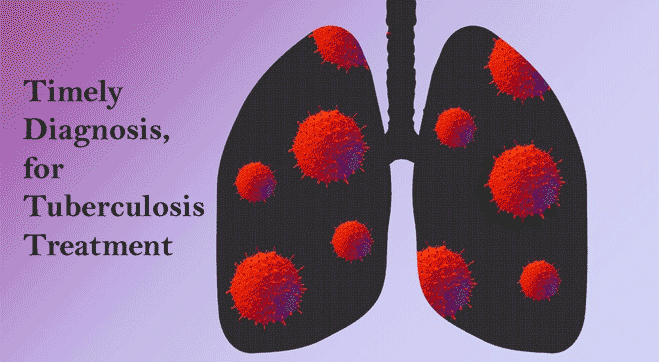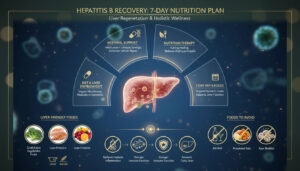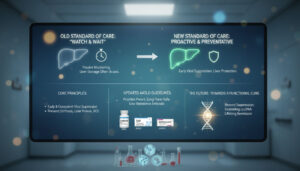Aging is a continuous progressive change in human beings. India has around 7.7% of its population categorized into the age group of 60 years and above. With the increasing group of elderly and their health conditions, the importance of diagnosis for elderly has also increased. Tuberculosis is among the prevalent diseases which target the senior citizens.
Tuberculosis (TB) Tuberculosis is considered to be one of the most deadly infectious diseases, which is transmissible through air. The bacteria spreads in the air when the patient with Tuberculosis coughs, sneezes, speaks, etc.
Although said to be a respiratory disease affecting the lung (pulmonary), it also affects other vital organs of the body such as spine, brain and kidneys (extrapulmonary). The impact of this foreign intrusion into the body depends on the counter effect of the host immune system.
Old Age and Weakened Immunity – The root cause of vulnerability
Weaker the immunity more will be the susceptibility to infectious diseases like TB. With
growing age, the integrity of immune system goes on decreasing. The development and
migration of cellular components (B and T cells) of the immune system from organs to
blood reduces with increasing age. The production of white blood cells called lymphocytes
also declines, thus altering the composition and quality of the immune system in elderly.
This deteriorating immune system makes them more vulnerable to diseases, especially TB.
Compared to younger individuals, the mortality rate of Tuberculosis in seniors is six times higher.
Tuberculosis infection at old age can be due to two reasons
Reactivation of dormant infection in the lung i.e. endogenous infection.
Acquiring the infection from an external source i.e. exogenous infection.
Geriatric TB is thought to be different from Tuberculosis in younger people, because of the clinical manifestations which are distinct in elderly. Common signs and symptoms of conventional TB include fever, night sweats, sudden weight loss, cough, etc. These indicative features are different for elderly people. Their clinical presentations may include chronic fatigue, anorexia, reduced functionality, cognitive impairments such as declining memory, speech, sight, hearing capacity, etc. Diagnosis becomes difficult as these manifestations in the elderly mimic those of age related issues.
Difficulty of Tuberculosis Diagnosis in Elderly
In comparison to younger people, elder patients show severe conditions such as abnormalities
in liver enzymes, hypoalbuminemia (low level of albumin in blood), hyponatremia (low level of
sodium in the blood), hypokalemia (low level of potassium in blood) and anemia. The difficulty
in diagnosing Tuberculosis in geriatric patients is higher due to the following reasons:
– Weakened immune system posing a negative impact on immunological tests to detect
evidence of Tuberculosis history.
– Symptoms of geriatric TB are overlapping with conventional TB and thus confused as age-related
issues.
Early and periodic diagnosis therefore, becomes very essential to keep a check and record the history of Tuberculosis in patient, family history/contact history, past history. Diagnosing in terms of prevention during regional epidemics as old age people are more prone to Tuberculosis, living in areas where prevalence of Tuberculosis is high.
The spread of the disease can be effectively prevented by early diagnosis, as TB positive individual can infect on an average 10 contacts annually and more than 20 during the life time until death. So timely diagnosis can help to cut the transmission cycle and prohibit further spread. The challenges to overcome the delay include late detection, misdiagnosis and missed diagnosis of Tuberculosis.
Tuberculosis transmissions and delays Most transmission of Mycobacterium tuberculosis begins with the onset of symptoms and continues till the initiation of treatment. Patients with multidrug resistant TB can remain infectious for prolonged periods, raising the concern about nosocomial and occupational transmission. Such outbreaks pose a recognized risk to the patients and healthcare workers.
Patient’s alertness to the symptoms of Tuberculosis combined with promptness of healthcare system to diagnose and recognize which factor influences delay is essential to control the epidemic spread of Tuberculosis. Delays caused from patient and healthcare system fronts are stated as follows:
Patient delay – is the period between onset of symptoms and patient’s first move towards the hospital to seek treatment. Unawareness is the major factor contributing to such delay .
Delay in Tuberculosis diagnosis and start of treatment constitutes the health care system delay which may occur due to poorly trained staff or limited diagnostic facilities.
Total delay is the sum of the two durations between onset of symptoms and start of treatment for TB i.e. both patient delay and health care system delay.
Delay in diagnosis affects prognosis.Prognosis gets profoundly influenced by the delays caused in TB diagnosis and treatment at individual level. Especially in cases with double stigma of HIV and TB mortality rate is higher due to worse prognosis, occurrence of other opportunistic infections and drug resistance. Simultaneously, it results in increased infectivity within the community.
Risk factors for delayed start of tuberculosis treatment
Many factors contribute to delays, which are different for different settings. Some were more closely related to the patient delay such as alcohol, poverty, low access to health care facilities, awareness, beliefs and knowledge about TB.
Other factors are prominently more linked to healthcare delay – coexistence of chronic cough or lung disorder, having negative sputum smear Tuberculosis, seeking traditional practitioners first. Apart from this there are numerous such risk factors:
1. Severity and specificity of symptoms
2. Vagueness of symptoms
3. Absence of hemoptysis
4. Old age
5. Female sex
6. Ethnic group
7. HIV
8. Extra pulmonary TB
9. Repeated visit to the health center at the same level
10. History of immigration
Tuberculosis Diagnosis
A complete medical evaluation can prove essential for geriatric TB diagnosis.
Some examinations which can assist in diagnosis includes
Tuberculin Skin Test (TST)
A two-step TST is usually recommended for geriatric TB due to declined immunity. This is
conducted to evaluate if the patient has developed immune response to the bacterium
responsible for TB, as also seen in latent Tuberculosis.
Chest Radiography Imaging Test The patient’s lung image is captured through radiography which displays the abnormalities in posterior and lateral sections of the lung. Also, computed tomography (CT) is frequently employed in the diagnosis and follow-up of Tuberculosis.
Acid-Fast Bacilli (AFB) test The AFB smear test is conducted to detect and identify the bacteria responsible for Tuberculosis.
Direct Amplification Tests (DATS) This helps to detect the Mycobacterium complexes which are accountable for Tuberculosis infections by molecular methods like polymerase chain reaction (PCR), Real-time PCR (RT PCR), Cartridge based nucleic acid amplification test (CB-NAAT.)
Most geriatric TB patients remain undiagnosed throughout their life due to overlooking or lack of distinctive symptoms unlike in younger people. In elderly patients, many clinical features of TB are subtle or absent, making diagnosis difficult. The high number of cases diagnosed at autopsy among the elderly suggests that TB frequently remains unrecognized. Thus, it is a responsibility that everyone must undertake periodic testing for TB in older citizens of our country.
Worldwide the most important of all these factors is HIV, the co-epidemic of which continues to cater the growing epidemic of TB. Smoking more than 20 cigarettes a day also increases the risk of Tuberculosis by two to four times. Globally, the severe malnutrition in some parts of the world has largely increased the risk of encountering active TB due to its damaging effects on immune system.
Book TB whole genome sequencing profileTherefore, it is desperate need of the hour to clearly identify major contributors to delays. Country-specific or population group specific (i.e. women, rural or urban residents, etc.) determinants of delays must be studied and addressed to devise strategies for an effective TB control program.
Increasing burden of TBTuberculosis is world’s greatest killer of women of reproductive age and the leading infectious cause of death among peoples with HIV. The risk of developing TB in HIV positive person is 50% while that for HIV negative is 5-10%. In South East Asia region, five countries are high or moderate TB/HIV burden countries: India, Indonesia, Myanmar, Nepal and Thailand. India has largest total incidence of TB with an estimated 2.0 million new cases in 2007. Certainly, TB is preventable and curable and the tide can be turned by improving treatment exposure, ensuring cure and limiting transmission. WHO released in October 2010 a new global plan Stop TB 2011-2015 to reduce the burden of TB, halve TB deaths and its prevalence.








